Fall sports state championships represent the pinnacle of high school athletic achievement as seasons culminate in November and early December across the nation. From Friday night lights illuminating football championship games to cross country runners conquering state meet courses, volleyball teams battling for titles, and soccer programs pursuing championship glory, fall sports create unforgettable moments that define school traditions and inspire communities.
These championship achievements deserve recognition that matches their significance—celebrating not just the final victories but the dedication, teamwork, and excellence that distinguished championship teams and athletes from hundreds of competitors statewide. Yet many schools struggle to honor these accomplishments appropriately, defaulting to generic championship banners that fade quickly or trophy cases too crowded to give proper prominence to state championship glory.
Why Fall Sports State Championship Recognition Matters
Fall sports state championships carry unique significance in high school athletics. They mark the culmination of summer training camps, early morning practices, and months of competition during the school year's most intense academic period. Championship teams overcome challenging schedules, navigate playoff pressure, and achieve excellence while balancing demanding coursework. Schools that implement comprehensive recognition programs for fall sport championships demonstrate commitment to honoring complete student-athlete achievement while building traditions that inspire future teams. Digital recognition solutions like Rocket Alumni Solutions enable schools to create engaging championship displays that celebrate current achievements while preserving decades of fall sports excellence in easily updatable, professionally presented formats.
Understanding Fall Sports Championship Seasons
Before implementing recognition systems, schools benefit from understanding the unique characteristics and timelines that define fall sports championships across different sports and states.
The Fall Sports Championship Calendar
Fall sports seasons typically begin in August with practices and early-season competitions, building through September and October regular seasons before culminating in November and December playoff runs and championship events.
Football Championships: High school football represents the most prominent fall sport in many states, with championship games typically scheduled in late November through mid-December. States often host multiple classification championships, creating opportunities for schools of all sizes to compete for titles. Championship venues frequently include college stadiums or neutral-site professional facilities that accommodate large crowds and create memorable championship atmospheres.
Volleyball State Tournaments: Volleyball state tournaments commonly occur in early to mid-November, with many states hosting multi-day championship events bringing together teams from various classifications. These tournaments often take place at university facilities or convention centers equipped with multiple courts, allowing simultaneous matches across different classifications and championship rounds.
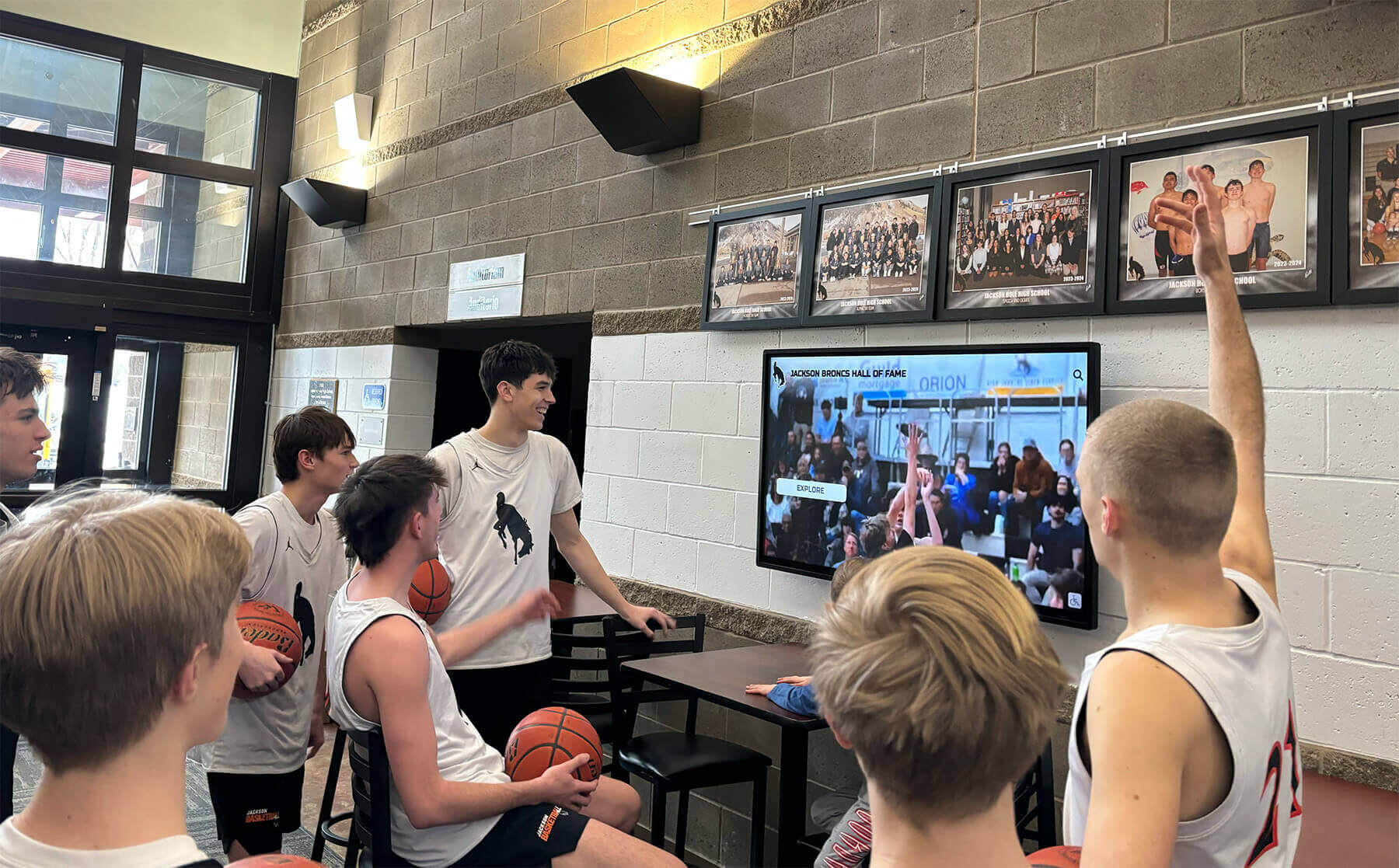
Cross Country State Championships: Cross country state meets typically conclude fall seasons in late October or early November, bringing together individual runners and teams for championship races on designated courses. Unlike team sports with multi-round playoffs, cross country features single championship events where season-long training and preparation culminate in one decisive race determining state champions.
Soccer Championships: Soccer state tournaments often extend into late November, with playoff brackets narrowing through regional and semi-final rounds before championship matches determine state titleholders. Some states separate boys and girls soccer into fall and spring seasons, while others schedule both in fall, creating multiple championship opportunities.
Additional Fall Championships: Depending on regional traditions, fall championship seasons may include field hockey (particularly in northeastern states), golf tournaments, tennis championships, swimming meets, and competitive cheerleading events, each with sport-specific championship formats and recognition traditions.
Understanding these varied schedules helps schools plan timely recognition that celebrates championships while momentum and excitement remain high, rather than delayed recognition that loses emotional impact.
Multi-Classification Championship Systems
Most state athletic associations divide schools into multiple classifications based on enrollment, creating championship opportunities across different competitive levels while ensuring fair competition among similarly sized schools.
Classification Structures: Common classification systems include 1A through 6A or 7A divisions (with 1A representing smallest schools), regional divisions separating geographic areas, enrollment-based groupings that create relatively equal competitive environments, and occasionally separate public and private school divisions addressing competitive balance concerns.
Each classification’s state championship carries equal significance for participating schools, regardless of enrollment size. A 1A football championship represents the pinnacle achievement for small rural schools just as meaningfully as 6A titles represent excellence for large suburban programs.
Recognition Equity Across Classifications: Effective recognition programs honor championships across all classifications equally, avoiding the perception that large-school championships deserve greater prominence than small-school titles. Digital recognition systems particularly excel at providing equivalent showcase opportunities for all championship teams regardless of classification or sport profile.
Resources on athletic recognition programs provide frameworks for celebrating achievements across diverse sports and competition levels while maintaining consistent recognition standards.
Fall Sports-Specific Championship Recognition
Different fall sports feature unique championship characteristics and traditions that influence optimal recognition approaches, requiring sport-appropriate celebration strategies.
Football State Championship Recognition
Football championships typically generate the most community excitement and attendance of any fall sport championships, deserving recognition reflecting their significance in school athletics and community culture.
Championship Game Details: Comprehensive football championship recognition should document opponent faced and final score, championship venue and attendance, season record and playoff run, classification or division, key statistical achievements (yards, points, defensive performance), and memorable moments or turning-point plays that defined championship success.
Many football championships become legendary school moments—last-second field goals, dramatic defensive stands, weather conditions that tested championship mettle, or individual performances that elevated teams to titles. Recognition should preserve these narratives alongside basic championship facts.
Individual Recognition Within Team Success: While football remains the ultimate team sport, championship teams feature individual excellence deserving acknowledgment. Recognition displays should highlight championship MVP or offensive/defensive players of the game, all-state selections from championship roster, statistical leaders who drove championship success, senior leaders who guided teams through playoff pressure, and coaching staff who prepared teams for championship moments.
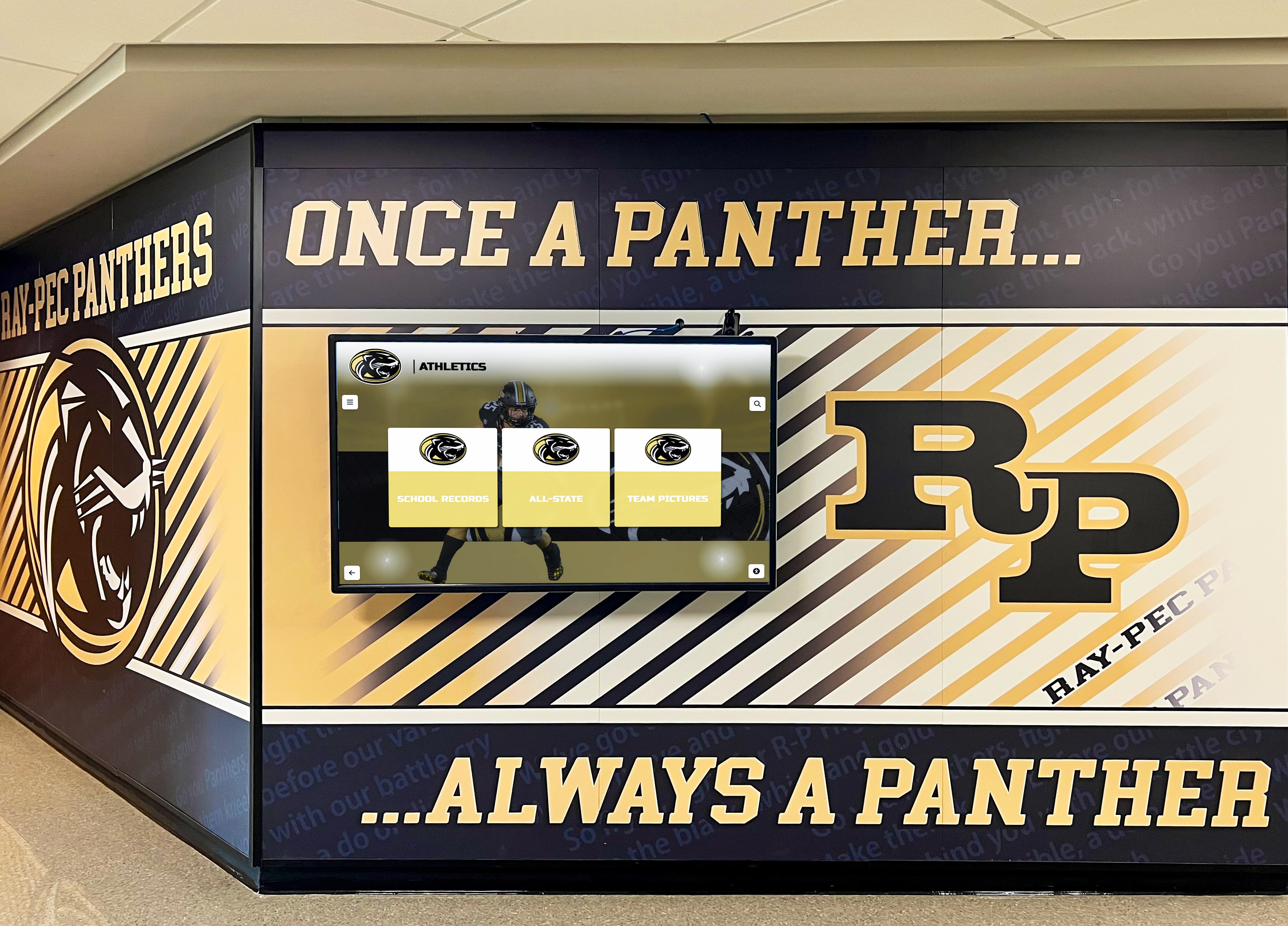
Resources on Texas high school football traditions explore recognition strategies in regions where football championships define community identity and deserve comprehensive celebration.
Volleyball Championship Recognition
Volleyball state championships often conclude with tournament formats bringing together top teams for multi-day championship events creating unique recognition opportunities.
Tournament Achievement Documentation: Volleyball championship recognition benefits from documenting tournament bracket path and opponents faced, match scores throughout tournament run (set scores tell championship stories), tournament MVP and all-tournament selections, statistical leaders (kills, blocks, assists, digs), and championship match highlights and momentum shifts.
Unlike single-championship-game sports, volleyball teams often play multiple matches throughout tournament weekends, with each victory representing critical achievement along championship paths. Recognition should honor complete tournament excellence rather than just championship match success.
Team Chemistry and Culture: Volleyball particularly emphasizes team cohesion and communication, with championship teams often citing team chemistry as critical success factors. Recognition displays incorporating team photos, player testimonials about team culture, and documentation of season-long development celebrate volleyball’s collaborative nature while honoring individual excellence within team contexts.
Cross Country State Championship Recognition
Cross country presents unique recognition challenges as both individual and team sport, requiring celebration of dual achievement pathways.
Individual Achievement Recognition: State meet medalists and placers deserve prominent individual recognition including final placement and finish time, improvement throughout season leading to state meet performance, course conditions and competitive context, and post-season honors (all-state selections, regional recognition).
Cross country produces some of fall sports’ most impressive individual achievements—runners who overcome mid-season struggles to peak at state meets, breakthrough performances from unlikely competitors, or dominant seasons culminating in decisive state championship victories.
Team Championship Recognition: Cross country team championships result from collective excellence across top finishers, requiring recognition that honors scoring runners’ combined placement, team training culture and preparation approaches, coaching strategies that developed championship-level performance, and improvement trajectory showing team development across seasons.
Resources on 1,000 point scorer recognition demonstrate frameworks for honoring individual milestone achievements that apply to cross country records and state meet performances.
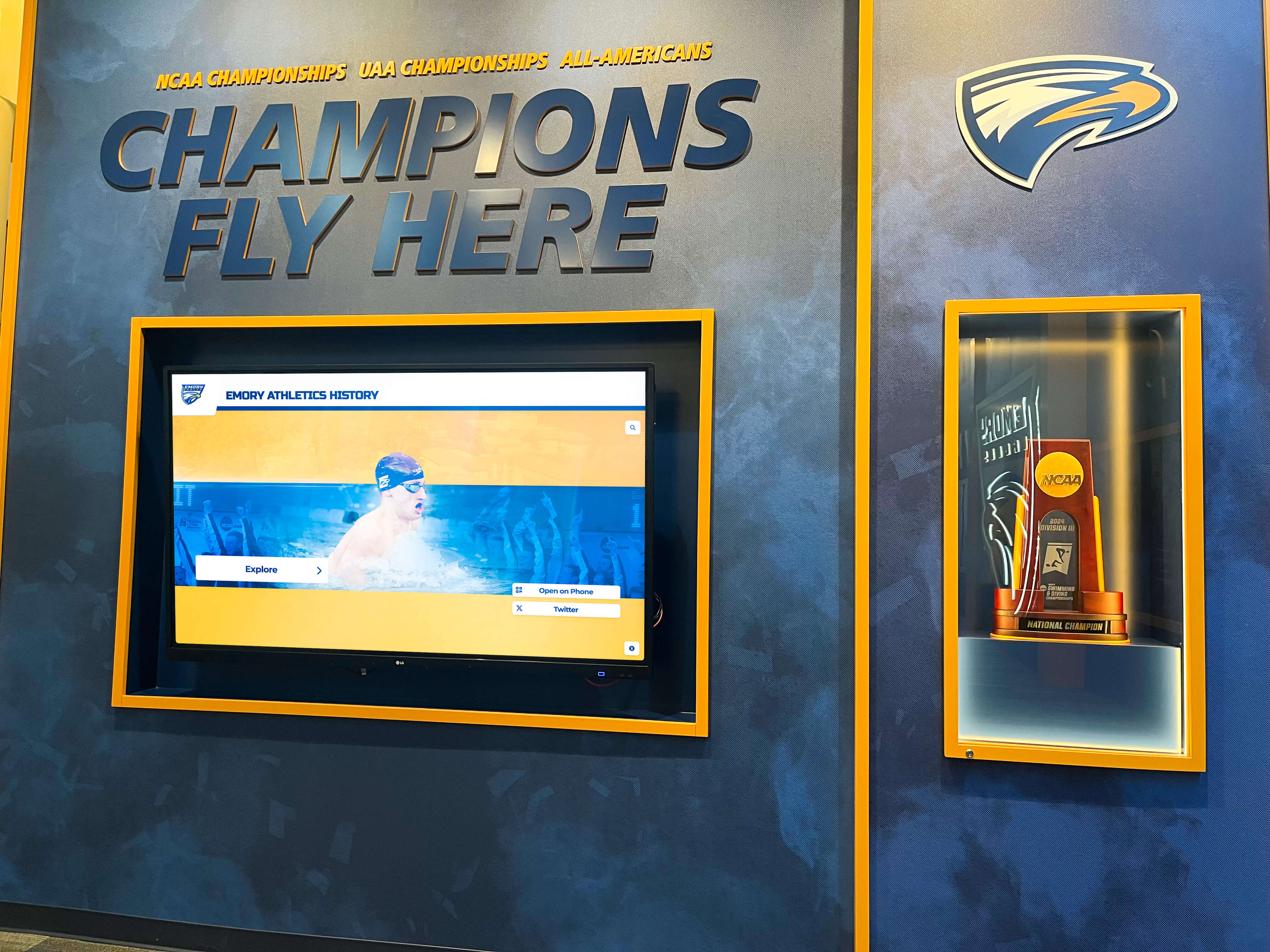
Soccer State Championship Recognition
Soccer championships often produce dramatic moments and tactical excellence deserving comprehensive documentation beyond simple victory acknowledgment.
Match Narrative and Context: Soccer championship recognition gains depth by documenting goals scored with timing and scorers, key saves or defensive stands, penalty kick outcomes in close championships, tactical approaches and game plans, and weather or field conditions affecting championship matches.
Soccer’s continuous flow creates championship moments difficult to capture in static statistics—goalkeeper heroics preserving slim leads, defensive organization frustrating favored opponents, midfield control establishing championship dominance, or offensive creativity breaking through determined defenses. Recognition should preserve these tactical and strategic elements alongside outcome documentation.
Tournament Run Recognition: State championship runs require multiple playoff victories leading to finals, with recognition celebrating quarterfinal and semifinal achievements leading to championships, comeback victories demonstrating championship character, goals allowed throughout tournament showing defensive excellence, and clutch performances in elimination situations.
Traditional Fall Championship Recognition Methods
Traditional recognition approaches remain popular for celebrating fall sports state championships, offering tangible, permanent displays communicating championship achievements for generations.
Championship Banners
Championship banners represent the most visible and traditional fall sports championship recognition format, displayed prominently in gymnasiums where championship teams competed.
Banner Design Elements: Effective championship banners typically include sport identification and championship year, school name and mascot, state championship designation and classification, final record or tournament results, and school colors and branding elements creating visual consistency across multiple championship banners.
Quality championship banners use durable materials designed for long-term gymnasium display, professional printing or embroidery techniques ensuring lasting appearance, appropriate sizing visible from gymnasium seating areas, and mounting systems preventing sagging or damage over time.
Banner Placement Strategies: Strategic banner display maximizes championship recognition impact through chronological arrangements showing championship tradition progression, sport-specific grouping organizing achievements by athletic program, prominence based on available wall space and viewing angles, and lighting highlighting championship banners appropriately without creating glare or washing out colors.
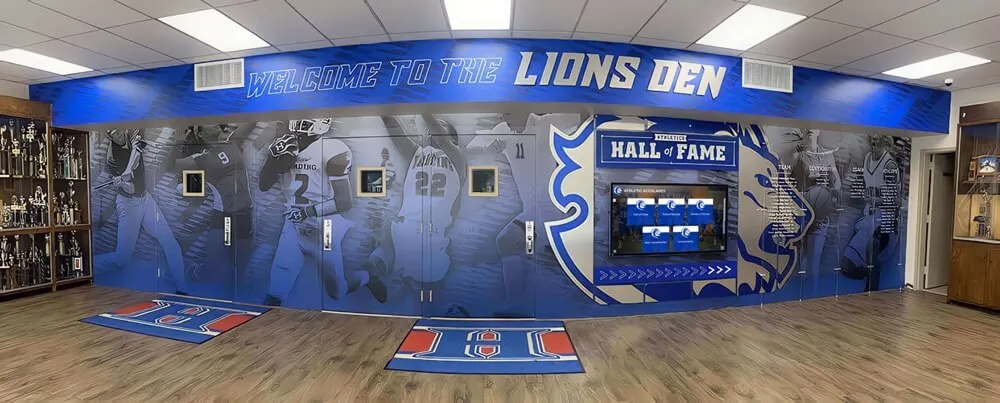
Many schools face space constraints as championship traditions grow, with limited gymnasium wall space eventually necessitating difficult decisions about banner rotation, storage, or alternative recognition formats accommodating unlimited championship achievements.
Trophy Cases and Physical Displays
Trophy cases remain central to championship recognition in many schools, showcasing championship trophies alongside related memorabilia and documentation.
Championship Trophy Presentation: Beyond simply placing championship trophies in cases, effective displays include championship context through descriptive plaques, team photographs from championship events, game balls or championship match balls, newspaper coverage highlighting championship achievements, and individual awards earned by championship team members.
Trophy cases work best when regularly maintained with clean glass and proper lighting, organized arrangements preventing cluttered appearances, protected from sun exposure causing fading or damage, and systematically updated as new championships occur.
Championship Recognition Sections: Creating dedicated championship sections within broader trophy displays ensures state titles receive appropriate prominence separate from regular season tournaments, conference championships, or participation awards. This categorical organization helps visitors immediately identify the school’s highest achievements.
Resources on digital trophy cases explore how modern solutions expand beyond physical space limitations while maintaining the tangible trophy display traditions many stakeholders value.
Championship Plaques and Walls
Permanent championship plaques mounted on dedicated recognition walls provide lasting documentation requiring less space than traditional trophy cases while accommodating unlimited growth.
Plaque Design Consistency: Effective championship plaque walls maintain consistent design across years including uniform plaque sizes and shapes, matching materials and mounting styles, consistent information presentation formats, and coordinated color schemes reflecting school branding.
This consistency creates professional appearances while clearly communicating sustained championship excellence across multiple sports and years.
Organizational Approaches: Championship plaque walls benefit from systematic organization such as sport-specific sections grouping achievements by athletic program, chronological arrangements showing championship timeline, or classification-based grouping for schools regularly competing at multiple levels.
Clear organization helps visitors navigate information and understand championship context rather than facing undifferentiated walls of plaques lacking interpretive organization.
Modern Digital Recognition for Fall Sports Championships
Digital recognition technology provides compelling advantages for celebrating fall sports state championships, offering capabilities traditional formats cannot match while maintaining the celebratory prominence championships deserve.
Interactive Digital Championship Displays
Digital hall of fame systems using touchscreen technology create dynamic championship recognition experiences where students, families, and visitors actively explore championship histories, team rosters, and individual achievements.
Comprehensive Championship Archives: Digital systems accommodate unlimited championship documentation without space constraints, enabling recognition of every fall sports state championship in school history, complete team rosters with player photographs, detailed statistical documentation and individual achievements, championship game or match media (photos, videos, news coverage), and post-championship impact (college recruitments, career highlights, reunion events).
This unlimited capacity ensures no championship achievement gets excluded due to physical display limitations, democratizing recognition and honoring all championship teams equally regardless of when titles occurred.
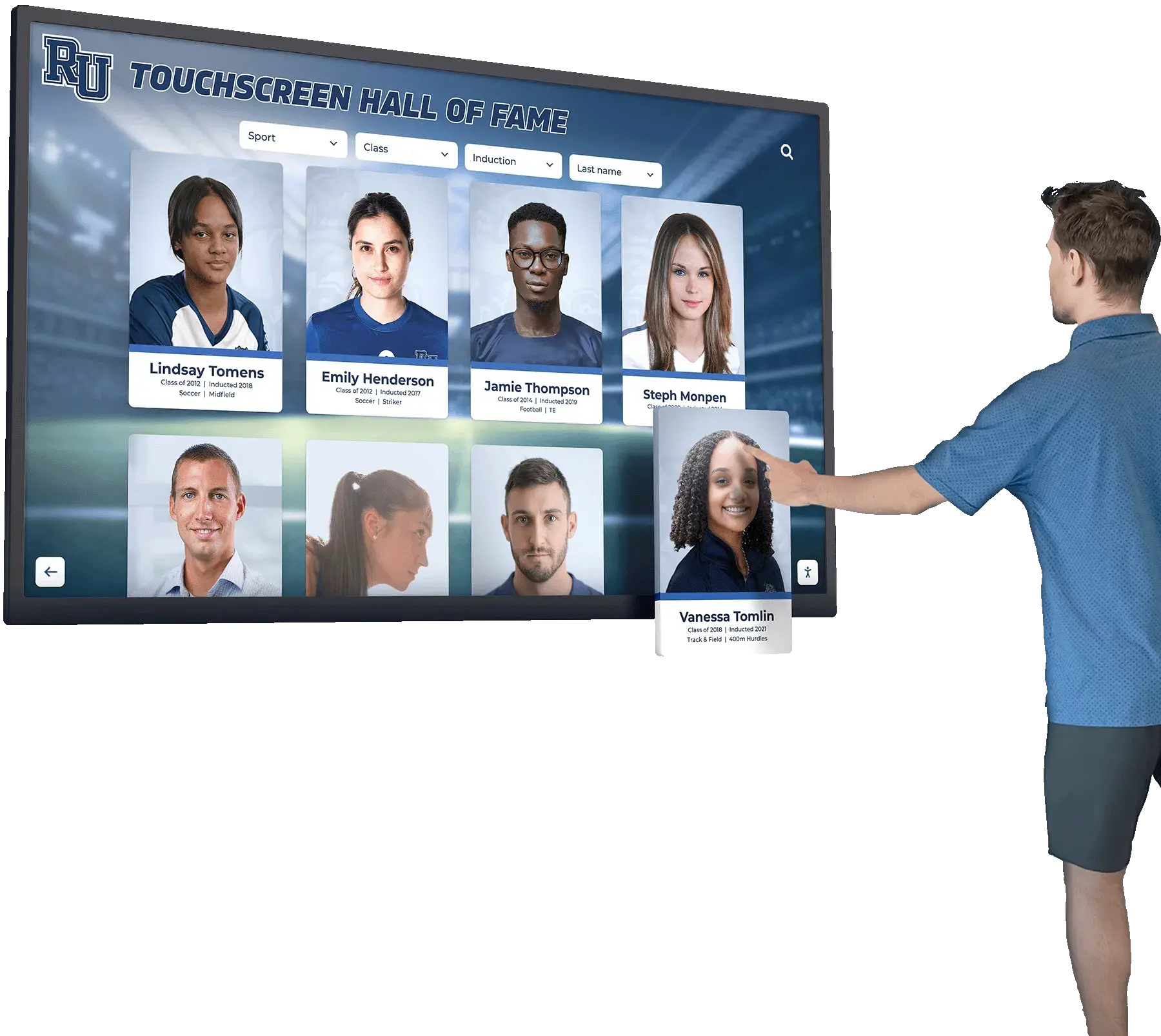
Rich Multimedia Championship Content: Digital displays support comprehensive championship storytelling including championship game or match video highlights, audio commentary and radio calls of championship moments, high-resolution team and individual photographs, newspaper articles and media coverage, and championship ceremony footage and celebration documentation.
These multimedia capabilities create emotional engagement static plaques or banners cannot approach, particularly for audiences accustomed to digital content consumption who find interactive exploration more engaging than passive viewing.
Immediate Championship Updates: When teams win fall sports state championships, digital systems enable recognition within days rather than waiting months for banner production or plaque creation. Athletic directors can upload championship photographs, document achievements, and publish recognition while championship excitement remains high—maximizing emotional impact and community celebration opportunities.
Solutions like Rocket Alumni Solutions provide purpose-built platforms designed specifically for comprehensive athletic recognition including state championships, individual achievements, and team excellence in single integrated systems.
Digital Championship Boards and Signage
Beyond interactive touchscreens, digital signage systems display rotating championship content in high-traffic areas where continuous visibility maximizes recognition impact.
Dynamic Content Rotation: Digital championship boards can rotate through content showcasing recent fall championships during current seasons, historical championship achievements maintaining institutional memory, individual athlete highlights from championship teams, championship anniversaries commemorating milestone achievements, and upcoming championship event promotions building community excitement.
This dynamic rotation ensures championship recognition remains fresh and engaging rather than static displays that eventually fade into background environments.
Multiple Display Locations: Digital signage flexibility enables championship recognition throughout facilities including main entrance displays welcoming visitors with championship achievements, cafeteria screens reaching students during daily routines, athletic facility locations reinforcing championship culture where teams practice and compete, and gymnasium displays supplementing traditional championship banners with dynamic digital content.
Resources on digital banner displays explore how schools combine traditional championship banner aesthetics with modern digital capabilities creating hybrid recognition approaches honoring tradition while embracing technological advantages.
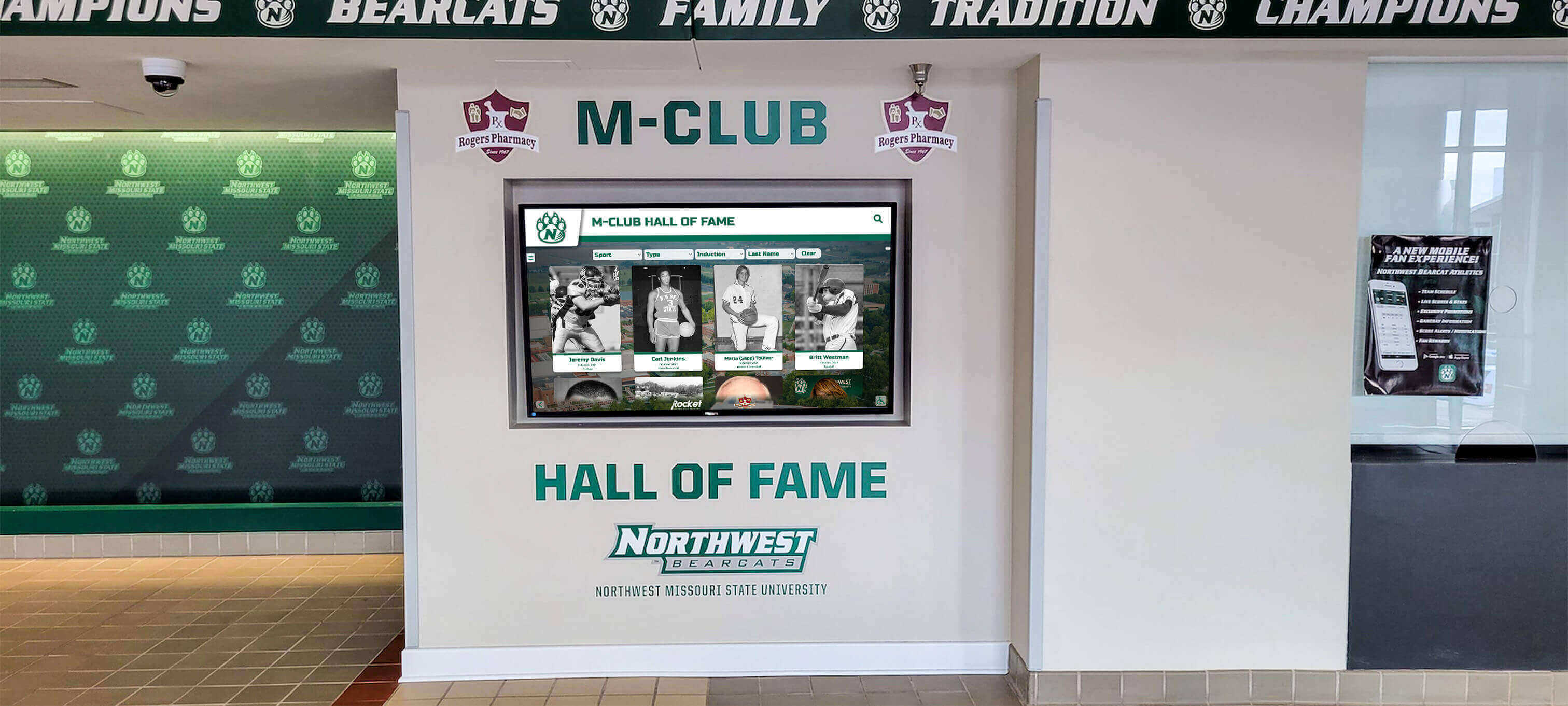
Online Championship Recognition Platforms
Extending fall sports championship recognition beyond physical school locations through online platforms amplifies impact and accessibility for geographically distributed stakeholders.
Web-Based Championship Access: Online championship recognition platforms enable championship team members to access recognition from anywhere after graduation, alumni to revisit their championship achievements remotely, college recruiters to research athletic program traditions, and media to document school championship histories for stories and features.
Social Media Integration: Digital platforms with social sharing capabilities extend championship recognition reach as families share championship recognition on personal networks, alumni celebrate from distant locations, community members amplify championship excitement, and prospective families research school athletic traditions.
Permanent Championship Archives: Online systems create searchable permanent championship archives preserving achievements indefinitely, ensuring championships remain accessible as physical facilities change, schools consolidate or relocate, or institutional memory naturally fades without systematic documentation efforts.
Creating Comprehensive Fall Championship Recognition Programs
Effective fall sports championship recognition extends beyond displaying team names and years to creating comprehensive programs that celebrate achievements appropriately while inspiring continued excellence.
Immediate Post-Championship Recognition
Timely recognition matters tremendously for championship teams. Immediate celebration while emotions run high creates memorable experiences and demonstrates institutional pride in student achievement.
Championship Celebration Events: Schools should consider hosting championship celebration assemblies welcoming returning teams, community recognition events honoring championship achievements, parade or motorcade routes celebrating with broader communities, and social media campaigns amplifying championship excitement.
These celebrations create shared experiences that become lasting memories for championship team members while reinforcing to all students that championship excellence receives enthusiastic institutional support and community celebration.
Initial Recognition Installation: Even when comprehensive recognition requires more time, installing immediate temporary recognition maintains championship visibility including congratulatory signage at school entrances, temporary gymnasium displays acknowledging championships, and digital screen updates announcing championship achievements.
This immediate visibility prevents championships from seeming like afterthoughts receiving belated recognition only after excitement fades.
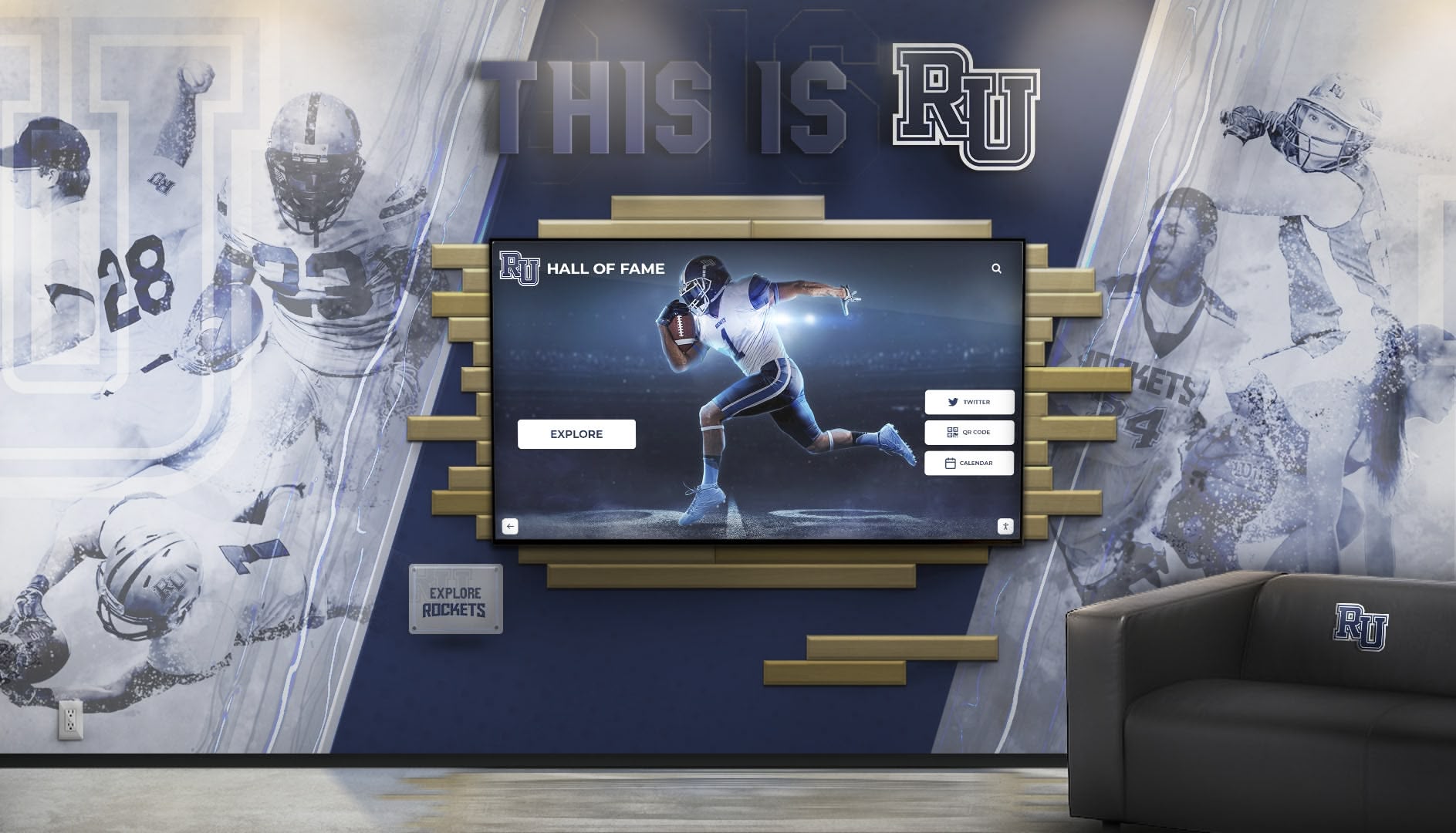
Comprehensive Championship Documentation
Creating thorough championship documentation provides foundation for lasting recognition that tells complete championship stories rather than reducing achievements to basic facts.
Historical Research and Collection: Championship documentation projects should systematically gather championship game programs and tickets, newspaper coverage and media accounts, official statistics and performance documentation, photographs from championship events and celebrations, video footage from game broadcasts or recordings, and player and coach testimonials about championship experiences.
This documentation becomes increasingly valuable as time passes and championship details fade from living memory, with comprehensive archives enabling future recognition enhancements and historical retrospectives.
Individual Achievement Recognition: While team championships deserve primary emphasis, documenting individual contributions creates complete championship stories including championship MVP and player of the game awards, all-state selections from championship rosters, statistical leaders who drove championship success, memorable individual performances in championship contests, and post-high-school careers demonstrating championship foundation.
Resources on student achievement recognition provide frameworks for celebrating individual excellence within team championship contexts while maintaining appropriate emphasis on collective achievement.
Anniversary and Legacy Recognition
Championship anniversaries provide natural opportunities for renewed celebration connecting past achievements with current programs while honoring championship team members’ lasting impact.
Championship Reunion Events: Five, ten, twenty-five, and fifty-year championship anniversaries create reasons for team reunions including championship team recognition at current competitions, stadium or gymnasium naming dedications honoring championship eras, documentary projects preserving championship stories, and hall of fame inductions for championship team leaders.
These anniversary celebrations maintain connections between championship alumni and current programs, with championship legends often becoming mentors, supporters, and ambassadors for programs they once elevated to state championship glory.
Legacy Recognition Elements: Championship recognition should explore long-term impacts including championship team members’ college athletic careers, professional achievements in sports or other fields, coaching or teaching careers giving back to athletics, and multi-generational family championship traditions.
This legacy recognition demonstrates that championships represent not just season-ending achievements but foundation for lifelong success and continued contribution to athletic programs and communities.
Resources on celebrating multi-generational athletic families explore strategies for recognizing family championship traditions that span decades and create unique institutional connections.
Sport-by-Sport Best Practices
Different fall sports benefit from recognition approaches reflecting sport-specific championship characteristics and traditions.
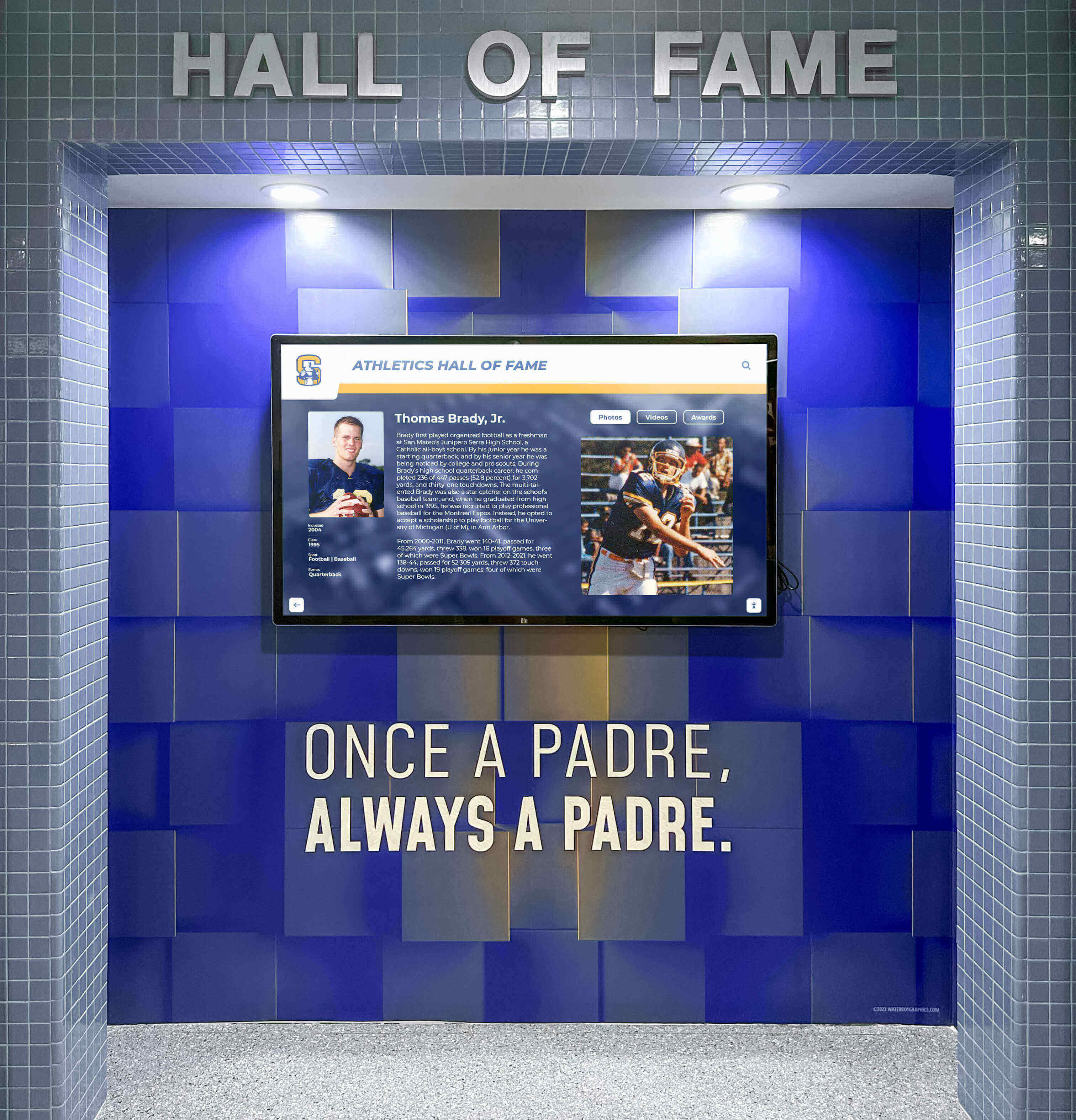
Football Championship Recognition Specifics
Friday Night Lights Culture: Football championship recognition should honor the Friday night tradition and community culture surrounding programs, including hometown support documentation, rivalry context and playoff paths, student section and community attendance, and broadcasting traditions (radio, streaming, media coverage).
Multi-Week Playoff Recognition: Rather than recognizing only championships, comprehensive football recognition celebrates entire playoff runs including upset victories over higher-seeded opponents, dominant performances against traditional rivals, close games demonstrating championship heart, and progression through regional and state semifinal rounds.
Volleyball Tournament Recognition Elements
Set-by-Set Documentation: Volleyball championship tournaments often feature dramatic momentum shifts within matches, with recognition benefiting from set-by-set scoring documentation, comeback victories from set deficits, clutch performances in decisive fifth sets, and statistical excellence throughout tournament matches.
Position-Specific Excellence: Volleyball success depends on position-specific excellence with recognition highlighting setter assists and leadership, outside hitter kill percentages, middle blocker defensive dominance, and libero dig counts and serve receive excellence.
Cross Country Individual and Team Balance
Dual Recognition Requirements: Cross country recognition must balance individual achievements with team success including individual state champion and medalist recognition, team scoring combination and depth, pack running strategies producing team success, and improvement trajectories showing program development.
Course and Conditions Context: Cross country performances occur under varying conditions affecting results, with recognition benefiting from course difficulty and characteristics documentation, weather conditions affecting performances, and competitive field quality and depth.
Implementation Planning for Fall Championship Recognition
Schools ready to launch or enhance fall sports championship recognition programs benefit from systematic planning addressing practical implementation considerations.
Assessment and Goal Setting
Current Recognition Audit: Begin by inventorying existing championship recognition including what championships are currently recognized and how, gaps in championship documentation or display, available space for recognition expansion, and stakeholder satisfaction with current recognition.
Stakeholder Input: Gathering perspectives from coaches about championship teams and recognition priorities, alumni championship team members about their recognition preferences, current students about recognition formats they find engaging, and athletic administrators about budget and implementation considerations ensures programs reflect broad community perspectives.
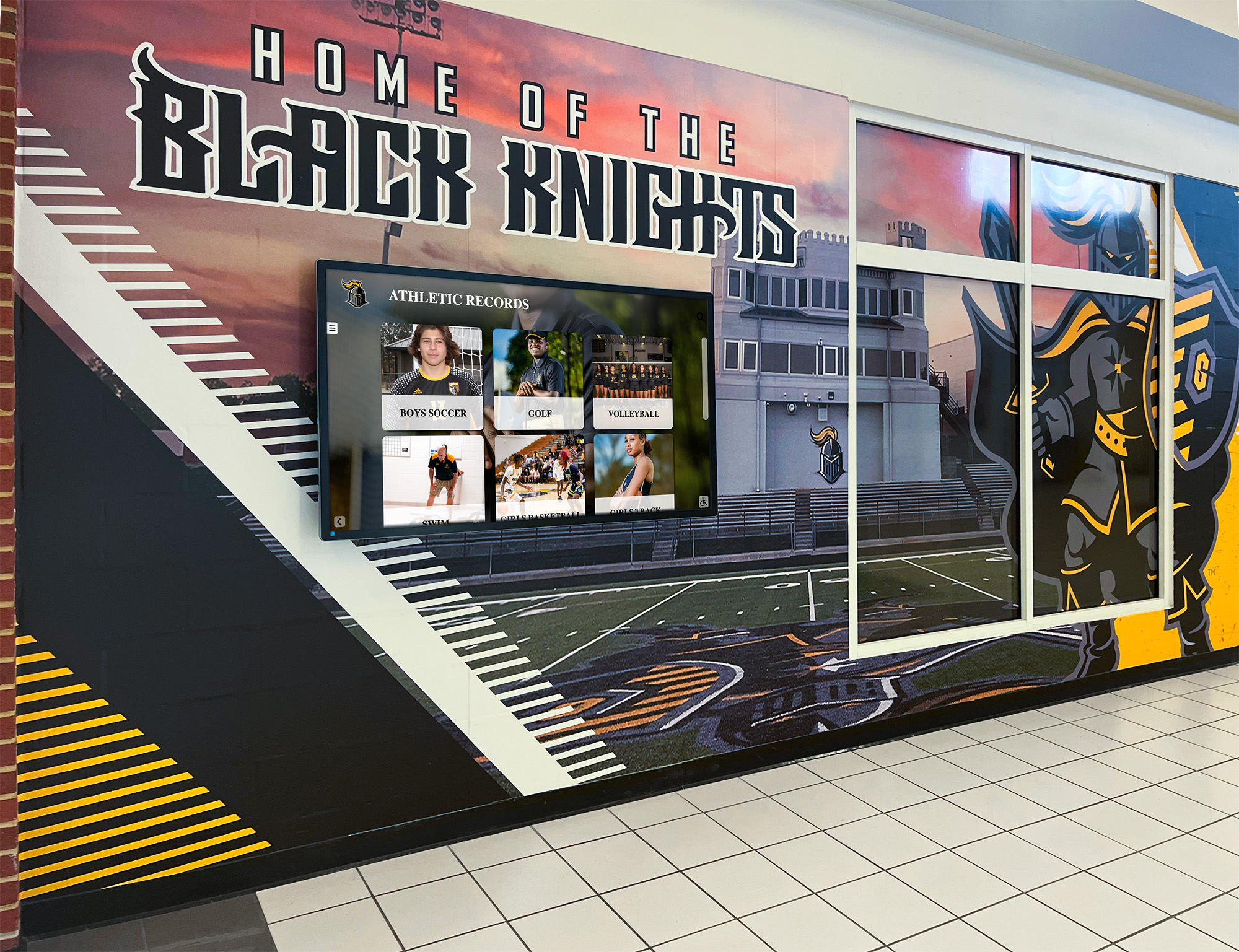
Goal Definition: Clear goals guide recognition decisions. Are you addressing space constraints in existing championship displays? Creating more engaging interactive championship experiences? Preserving championship history before institutional memory fades? Inspiring current teams through visible championship tradition? Different goals suggest different implementation approaches.
Budget and Funding Considerations
Traditional Recognition Costs: Traditional championship recognition typically involves championship banner costs of $200-$500 per banner, championship plaque systems ranging $3,000-$10,000 for comprehensive installations, trophy case expansion or renovation costs of $5,000-$20,000, and ongoing costs for new championships annually.
Digital Recognition Investment: Digital championship recognition systems require initial investment of $10,000-$30,000 for hardware, software, installation, and initial content development, with annual software licensing and support fees of $1,500-$5,000 for cloud-based platforms.
Funding Sources: Successful championship recognition programs often utilize athletic booster club support, alumni fundraising particularly from championship team members, memorial donations honoring championship coaches or athletes, corporate sponsorships with appropriate recognition, and phased implementation spreading costs across multiple years.
Resources on digital recognition ROI help demonstrate program value to potential donors and institutional decision-makers considering recognition investments. Schools implementing championship recognition can also explore strategies for showcasing college commitments as part of comprehensive athletic achievement programs.
Content Development and Historical Research
Championship Documentation Projects: Comprehensive recognition requires systematic documentation of all championships in program history including yearbook reviews documenting teams and achievements, newspaper archive research capturing contemporary coverage, athletic records review verifying statistics and rosters, and coach and athlete interviews preserving institutional memory.
Photo and Video Collection: Visual content brings championship recognition to life through family photograph requests from championship team members, newspaper archive photograph searches, yearbook scanning and digitization, and championship game footage collection from broadcasts or recordings.
This content development represents substantial work often underestimated during initial planning. Schools benefit from realistic timeline expectations with comprehensive championship recognition programs potentially requiring 6-12 months of research and development before launch.
Measuring Recognition Program Impact
Effective championship recognition programs include assessment mechanisms demonstrating value and guiding continuous improvement.
Quantitative Success Metrics
Recognition Completeness: Track percentage of known championships recognized in displays, championship documentation depth and quality, and historical coverage across program decades.
Engagement Measurement: For digital systems, monitor total interactions with championship content, time spent exploring championship information, most-viewed championships and athletes, and return visitor rates showing sustained interest.
Program Growth: Measure annual championship additions, historical championships added through ongoing research, and content enhancements updating existing recognition.
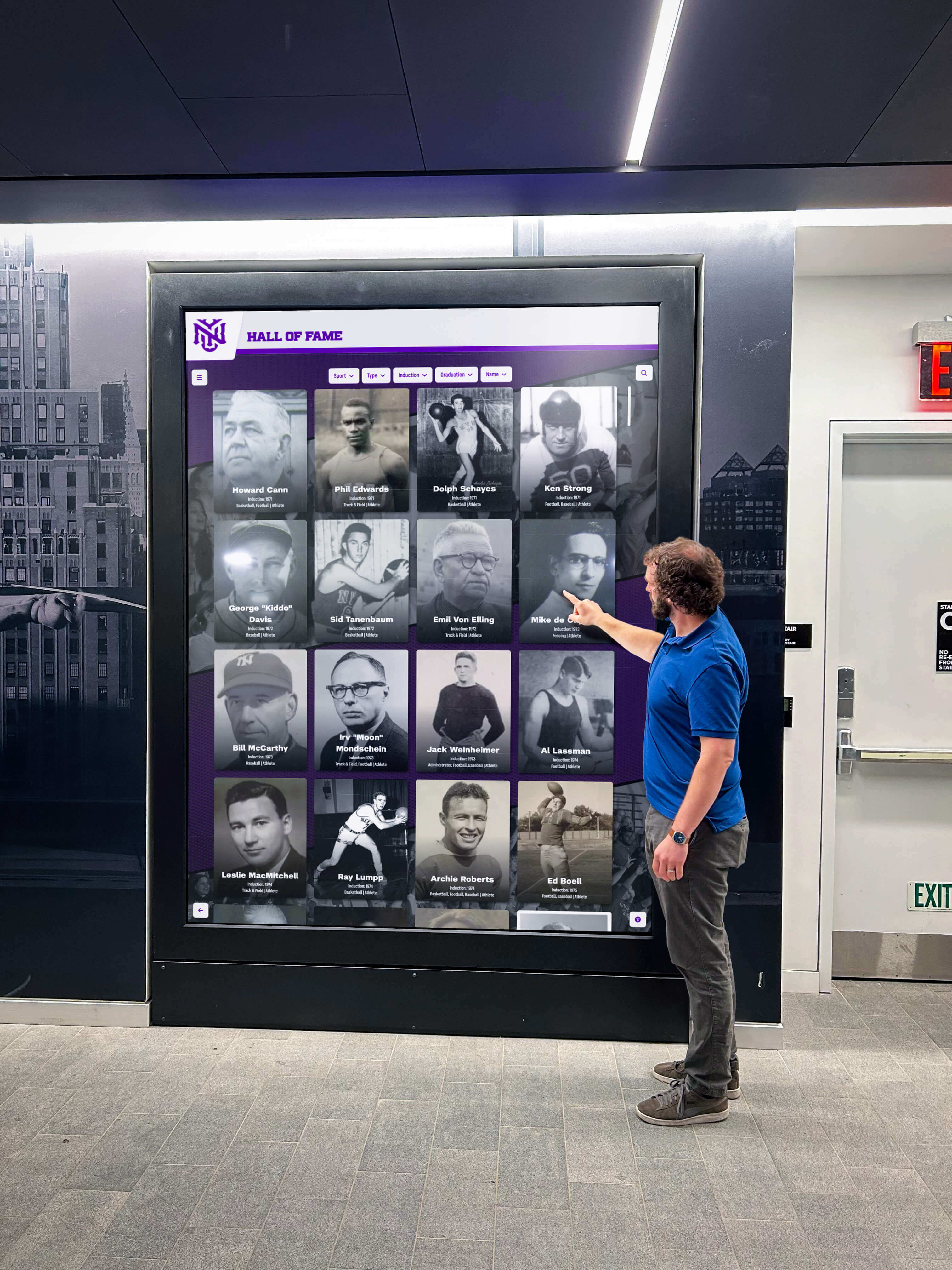
Qualitative Impact Assessment
Stakeholder Feedback: Regularly gather input from current athletes about how championship recognition motivates them, alumni championship team members about recognition satisfaction, families about championship recognition’s meaning, and coaches about recognition’s role in program culture.
Cultural Indicators: Assess whether championship recognition contributes to measurable increases in school pride and athletic participation, alumni engagement with athletic programs, community support for athletics, and prospective family interest during school tours.
Media Coverage: Track whether championship recognition generates local media features, social media engagement and sharing, and prospective family mentions during recruitment conversations.
Addressing Common Implementation Challenges
Schools implementing fall sports championship recognition commonly encounter specific challenges benefiting from proactive strategies.
Limited Space Constraints
Challenge: Existing championship recognition locations reach capacity as programs add championships, forcing difficult decisions about what achievements receive display prominence and which get relegated to storage or secondary locations.
Solutions: Digital recognition systems providing unlimited capacity without physical space constraints, rotating traditional displays cycling championships through available space, hybrid approaches combining traditional displays for recent championships with digital archives for complete history, and online platforms extending championship recognition beyond physical facility limitations.
Incomplete Historical Records
Challenge: Many schools discover that comprehensive championship documentation doesn’t exist, particularly for older championships lacking preserved photographs, detailed rosters, or statistical records.
Solutions: Systematic historical research projects involving volunteers and student researchers, accepting that historical recognition may have information gaps while documenting what’s verifiable, transparent acknowledgment when championship details cannot be confirmed, and phased implementation starting with well-documented recent decades while gradually expanding historical coverage.
Resources on digitizing athletic records provide frameworks for systematic historical documentation projects supporting comprehensive championship recognition.
Budget Limitations
Challenge: Recognition program aspirations often exceed available budgets, requiring creative approaches delivering meaningful recognition within financial constraints.
Solutions: Phased implementation prioritizing immediate needs while planning future enhancements, volunteer support reducing labor costs for research and content development, creative funding through championship-specific donations and sponsorships, and cost-effective digital solutions providing greater long-term value than repeatedly expanding physical displays.
Conclusion: Honoring Fall Sports Championship Excellence
Fall sports state championships represent extraordinary achievements distinguishing championship teams and athletes from thousands of competitors across sports requiring months of dedication, sacrifice, and relentless pursuit of excellence. These championships create defining moments in student-athlete lives and institutional histories deserving recognition that honors achievement magnitude while inspiring future generations to pursue their own championship aspirations.
Whether through traditional championship banners maintaining beloved gymnasium traditions, modern digital recognition platforms accommodating unlimited championship documentation, or hybrid approaches combining both, schools implementing comprehensive fall sports championship recognition programs demonstrate commitment to honoring student-athlete excellence, preserving institutional athletic history, and building championship cultures inspiring continued success.
Successful recognition programs require systematic planning and implementation, sustained commitment to quality and historical documentation, integration within broader athletic recognition systems celebrating diverse achievements, and strategic positioning supporting recruiting, culture-building, and community engagement objectives extending beyond simply displaying championship acknowledgments.
For schools ready to launch new fall sports championship recognition programs or enhance existing systems, solutions like Rocket Alumni Solutions provide purpose-built platforms designed specifically for comprehensive athletic recognition. These systems combine intuitive content management enabling easy championship documentation, engaging interactive displays creating memorable visitor experiences, unlimited capacity accommodating complete championship histories, and professional presentation reflecting championship achievement significance.
Fall sports state championships distinguish your school among countless programs competing for athletic excellence. Recognition systems should reflect this distinction through programs celebrating achievements appropriately, preserving championship stories compellingly, inspiring current athletes pursuing their own excellence, and honoring championship legacies ensuring achievements receive the lasting acknowledgment they have earned and the visibility they deserve.




































